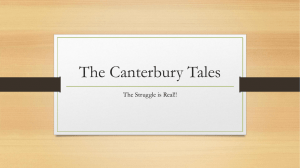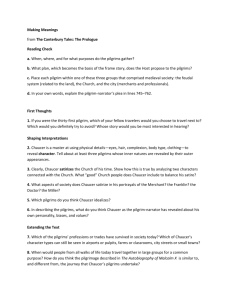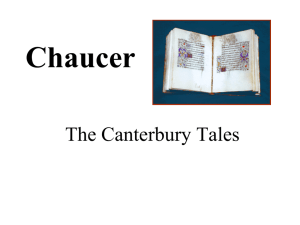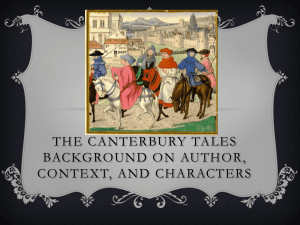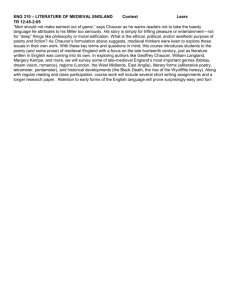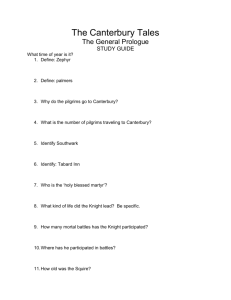The Canterbury Tales Notes… The Struggle continues! More than
advertisement
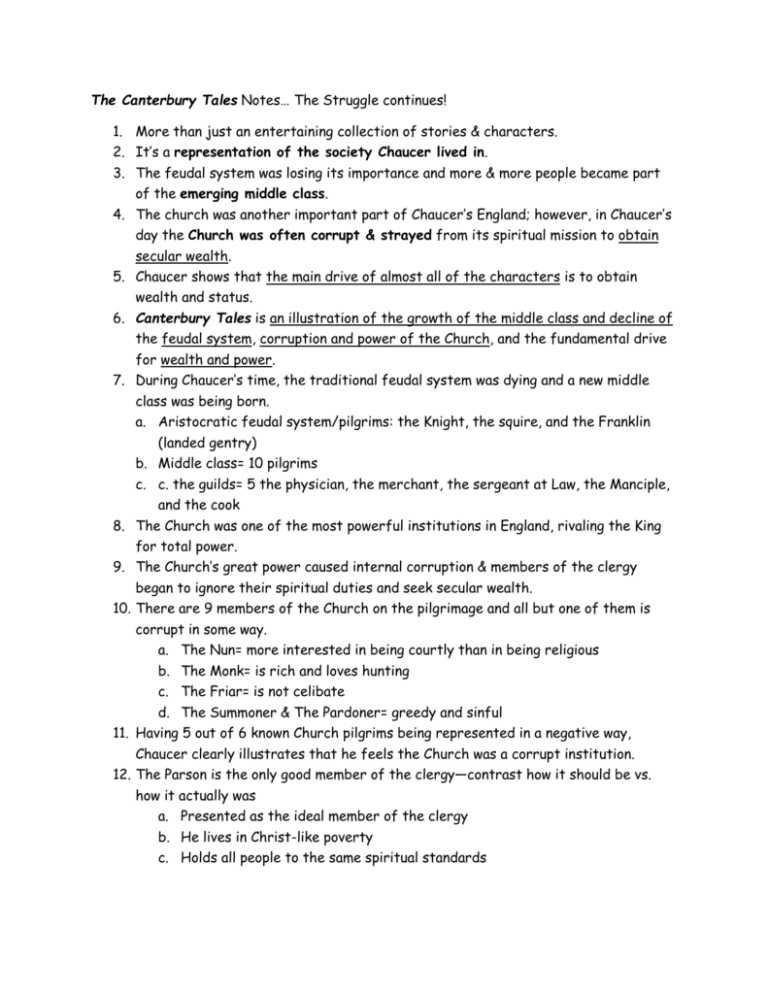
The Canterbury Tales Notes… The Struggle continues! 1. More than just an entertaining collection of stories & characters. 2. It’s a representation of the society Chaucer lived in. 3. The feudal system was losing its importance and more & more people became part of the emerging middle class. 4. The church was another important part of Chaucer’s England; however, in Chaucer’s day the Church was often corrupt & strayed from its spiritual mission to obtain secular wealth. 5. Chaucer shows that the main drive of almost all of the characters is to obtain wealth and status. 6. Canterbury Tales is an illustration of the growth of the middle class and decline of the feudal system, corruption and power of the Church, and the fundamental drive for wealth and power. 7. During Chaucer’s time, the traditional feudal system was dying and a new middle class was being born. a. Aristocratic feudal system/pilgrims: the Knight, the squire, and the Franklin (landed gentry) b. Middle class= 10 pilgrims c. c. the guilds= 5 the physician, the merchant, the sergeant at Law, the Manciple, and the cook 8. The Church was one of the most powerful institutions in England, rivaling the King for total power. 9. The Church’s great power caused internal corruption & members of the clergy began to ignore their spiritual duties and seek secular wealth. 10. There are 9 members of the Church on the pilgrimage and all but one of them is corrupt in some way. a. b. c. d. The Nun= more interested in being courtly than in being religious The Monk= is rich and loves hunting The Friar= is not celibate The Summoner & The Pardoner= greedy and sinful 11. Having 5 out of 6 known Church pilgrims being represented in a negative way, Chaucer clearly illustrates that he feels the Church was a corrupt institution. 12. The Parson is the only good member of the clergy—contrast how it should be vs. how it actually was a. Presented as the ideal member of the clergy b. He lives in Christ-like poverty c. Holds all people to the same spiritual standards d. Travels around his parish visiting all the people who need his help (rich & poor) 13. The pursuit of wealth & status is the common denominator of most of Chaucer’s pilgrims 14. Only 4 pilgrims do not chase wealth & power and Chaucer presents them as the most moral of the pilgrims--- they don’t chase money or status, instead dedicated their lives to study, religion, and kind deeds a. The Knight b. The Parson c. The Plowman d. The Clerk 15. Wealth is the primary motivator for such pilgrims as the Summoner, the Pardoner 16. Other pilgrims seek status- the Wife of Bath and the Nun 17. Chaucer illustrates his opinion that the drive for wealth & status is one of the fundamental problems of his 14th century England. *** portrayal of the rise of the middle class, the corruption of the church, and his society’s primary motivation; wealth and status. The church is corrupt instead of being the moral & spiritual leader that it once was. 18. In the Medieval church there were several ways to secure a place in heaven such as, Charity Building chapels Go on pilgrimages
